Before I start playing a Bethesda game there’s always this sense of dread, of intimidation. These games are huge beasts, meant to be played for months upon months with the hours ticking up into the hundreds for even the most casual of players. I know that’s simply not me for these kinds of games, partly due to my want to play a wide variety of games often but also because these games also require a lot of time upfront before they start to get good. Starfield was no exception to this, the opening 4 to 5 hours being both overwhelming and boring at the same time. After that the game starts to come into its own although the usual Bethesda jank, along with a few less than optimal design choices, ensures that it can’t quite achieve what it set out to do.

Humanity now reaches across the stars, our presence stretching some 50 light years beyond our home into a region we now call the Settled Systems. Faster than light travel ensures that no place is out of reach but the invention of the technology doomed our Earth’s magnetosphere to that of Mars’, it now being a barren wasteland that no one calls home. You’re a lowly space miner who’s been commissioned by the enigmatic organisation called Constellation: a group of explorers dedicated to expanding humanity’s reach even further. Your task is simple, retrieve an artefact for them that seems to defy the fundamental laws of nature itself. Upon removing it you’re taken over by visions of being pulled through space and time. This begins your journey to understand these artefacts and what they mean for the future of the universe.
Coming to us via Bethesda’s newly revamped Creation Engine 2 Starfield is certain to put any rig you throw at it to the test. Playing at launch wasn’t a great experience as the game did not natively support DLSS nor was it able to be optimised by the GeForce Experience client. Looking through some guides and installing a mod ensured I was able to address both those issues but this is something I’ve admittedly gotten used to not doing over the years. Once you get those things done though the game does look great, the improvements with the new engine really shining through. It is not universally smooth sailing though, as there are numerous unoptimised areas that will tank your FPS. Most notably I found this in the shipyard interface, usually when I’d made a bunch of modifications and then ALT+TAB’d or opened a menu. Again, Bethesda game, somewhat expected but still doesn’t do much to endear the game to you.
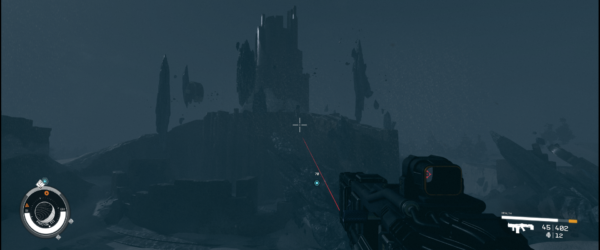
The scope of Starfield is grander than any Bethesda game that’s come before it with numerous worlds now at your disposal rather than just one. Of course not all of those worlds are that detailed with many of them just being large swaths of procedurally generated terrain that matches a particular kind of biome. Still there’s the usual cornucopia of gameplay mechanics that Bethesda is well known for. You’ll have your standard action RPG gameplay which will have you chasing loot in every corner in the hopes of coming across that one thing that makes your build entirely broken. Base building makes a return although, as my playthrough proved, is utterly optional and not even required to make fast progress should you know which planets to go to. The ship building is a riff on the base building, although this one travels with you and has its own separate combat mechanics. Layered on top of this is the usual open world sandbox affair with tons of side missions, optional interactions and events that will serve to distract you from the main campaign for as long as you care to let them. I truly was overwhelmed with the game to start off with as it really seems to want to pull you in multiple directions all at the same time.
Combat varies wildly from extremely satisfying to incredibly repetitive and tedious. Whilst the game does have level indicators on planets and areas you will often find yourself at either end of the difficulty spectrum. The most extreme examples of this happen earlier on, when your array of weapons, mods and skills is far more limited than it is later. Still it never feels particularly great to be going to a new planet and find yourself suddenly struggling when you’d been doing quite well for yourself the hours previously. This applies to both in-person and space based combat, although the latter became utterly trivial once I’d customised my ship with Class C weaponry and auto-turrets that did all the hard work of aiming for me.
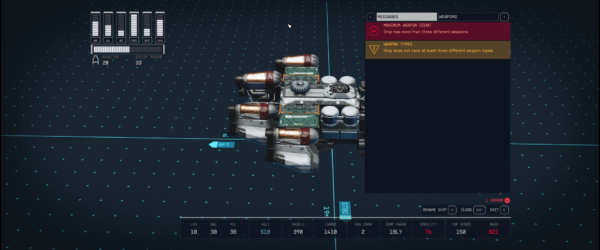
The one mitigating factor with combat though is that the enemy AI is dumb as rocks. Even the Starborn enemies, which you’d assume are supposed to be some of the toughest ones around, will usually just run directly at you or stay in cover taking pot shots until you score a hit or flush them out with a grenade. Space combat is similar to with most enemies doing the usual try to get behind you and do a strafe run kind of space combat that Freelancer made popular all those years ago. The real challenge in most of these fights usually comes from overwhelming numbers or simply high damage due to level difference. These kinds of games aren’t usually known for their deep combat but it was still somewhat disappointing.
Ship building was one mechanic I didn’t think I’d really get into but I have to admit that I quite liked the implementation that Bethesda went with here. Basically anywhere you can land a ship there’s a Ship Services section which will allow you to customise your craft. Not every place has all parts however, so you’ll sometimes have to travel to different stations to fit out your craft just the way you want. You’ll also have to invest some points in various ship related talents to unlock the better equipment as just the basics will only get you so far. It’s also worth noting that selling bits off your ship won’t net you as much cash as you think so you’ll have to ensure you have enough to finish your build before you start customising things. The UI is also a little bit weird in its implementation but once you know how to get around, which parts can go where and how layouts work it starts to make some kind of sense.
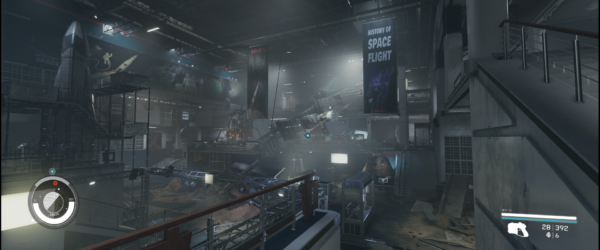
For those min/maxers out there it’s worth noting that a good looking ship and a maxed out ship are two entirely different beasts in this game. Cowlings, wings, and other aesthetic elements have a direct impact on your ships mass and therefore its maneuverability. You’ll also find that the best parts might not be from the same manufacturers and so their design won’t match the rest of your ship. Given how little you actually see your ship this probably isn’t a big deal but it’s something worth noting given how often I’ve seen people complain about the fact that making a good looking ship is such a crapshoot. I kinda liked my bolted together, ISS on a budget style look of my ship, even if the idea of it actually flying in space and not falling apart gave me a good chuckle every time I saw it.
Given I took my usual campaign-first approach to this game there were a few things that I didn’t get around to trying. Base building was one of them, partly due to the heavy investment in skills to do anything interesting with it or at least that’s how it appeared when I was looking at it. I also didn’t get into contraband running or any of the other trading focused ways of making credits. No instead I took the much more nefarious route: looting the chests of unsuspecting vendors and then waiting a couple days so I could do it all again whilst selling them all the crap I didn’t need so I could plunder their vast credit stores. I can understand why Bethesda doesn’t want to encourage this kind of behaviour but I really didn’t want to go through the hassle of setting up a base just so I had enough credits to continue modding my spaceship.
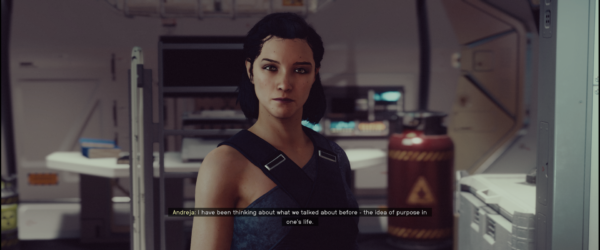
Now it’s been some time since I’ve played and I’m sure the game will continue to improve over time thanks to both Bethesda and the modding community. However my experience was one I’m sure a lot of people are very familiar with: one rife with all sorts of weird interactions, glitches, bugs, strange behaviours and, of course, exploits built on top of all of those. This is expected, given both the developer’s heritage and the scope of the game, but there are some things that I experienced which I would’ve thought could have easily been caught in QC before launch. One notable example included my parents being at the Constellation HQ all the time, whilst other NPCs there saying that they’d dropped by and left a note. Is it a huge deal? Probably not, but you do have to be comfortable with losing a non-zero amount of hours (yes hours) to these kinds of things.
The main campaign story is interesting enough, although its main beats feel like they were ripped almost straight out of Bethesda’s previous titles. If you’re like me and only invested a paltry 30 hours in it there’s really not enough time to flesh out all the characters enough to make you want to care about them. To be sure, there’s a few of them that I felt I had some connection with, but not enough to justify some of the emotional reactions that I know the game was searching for. There are the emerging narratives of course, some of which will feel a lot more compelling, but I’m struggling to come up with any that merit any mention. The overarching narrative felt like it had some real potential around the halfway point, but after then the scope feels like it narrows significantly as you start to inch closer to the conclusion. I’m reminded of the Ubisoft open world trope my friend introduced me to ages ago: brilliant world, endless potential, utterly forgettable narrative within it.
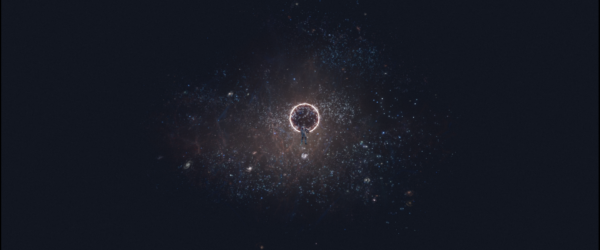
Which leaves me in a rather weird position trying to sum up my experiences with Starfield. On the one hand I can see a game that has hundreds of hours of playtime in it, something that I know Bethesda fans will play, mod and come back to for years to come. Even for me, someone who typically doesn’t invest a ton of time into games at this scale, put a good 30 hours into it. Then on the other hand I have these things that take away from that grand vision: the need for more polish, a narrative that didn’t leave the impact it was intended to have and a game that despite taking place in the infinite vastness of space feels like a few places stitched together. Maybe this is all preamble to me giving it a lower score than others might think it deserves, or others think it’s too generous. At the end of the day there’s some great gaming in here and it’s one that has the same potential in it that Cyberpunk 2077 did. Perhaps this can be one where Bethesda rights the ship for once, and not the modders.
Rating: 7.5/10
Starfield is available on Xbox Series X/S and PC right now for $119.95. Game was played on the PC with a total of 30 hours playtime and 27% of the achievements unlocked.



